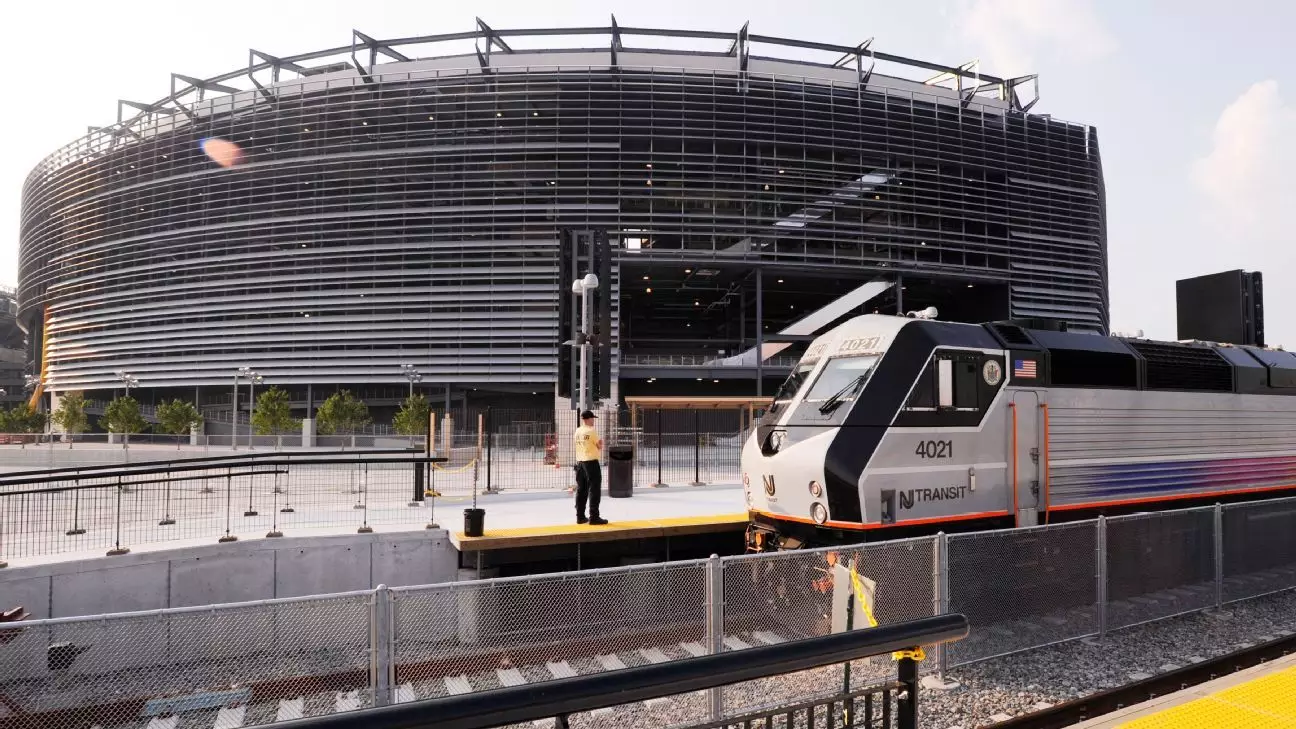As the excitement builds for the 2026 FIFA World Cup, anticipation is palpable across the Northeast U.S. Anchored by cities like Boston, New York, Philadelphia, and their connective infrastructure, event planners are proposing a unified experience for millions of visiting soccer enthusiasts. This ambitious concept of a ‘megasite’ hinges on seamless travel through the Northeast Corridor, a vital rail route powered mainly by Amtrak. However, this idyllic vision is cast in shadow by questions about whether Amtrak can rise to the occasion, given its present track record of unreliable service.
The Reality of Amtrak’s Service Challenges
For a rail service that claims to unify major metropolitan areas, Amtrak’s performance has been anything but stellar. Frequent breakdowns, overcrowded trains, and delays plague this already strained service, particularly along the Northeast Corridor—a 457-mile stretch of railway that sees about 2,200 daily trains transporting roughly 750,000 passengers. With the World Cup set to draw an estimated 6.5 million fans, any shortcomings in service will disrupt not just transportation logistics but the overall experience of the event.
Industry experts like Jim Mathews, chief executive of the Rail Passengers Association, have voiced these concerns sharply. “ You’re going to add millions of people into that mix for a short period of time, and it’s really going to crush capacity,” he notes. This implicit warning raises significant red flags about whether Amtrak’s existing infrastructure can support an influx of soccer fans.
Rising Demand, Dwindling Reliability
The statistics paint a stark picture: Amtrak’s 2024 company report revealed that as demand soared, delays became commonplace, with nearly 10% of trains arriving late or being annulled. Incidents in 2024, such as major equipment failures and disruptions in signaling systems, only exacerbate the situation. These problems lead many to question how the rail service will manage the challenge of increased passenger volumes versus a backdrop of aging infrastructure.
With 1,186 bridges and 17 tunnels—many dating back to the early 20th century—the potential for further operational failures looms large. Each World Cup match is a little less than a year away, but the strain on capacity promises to be immediate, raising concerns that the necessary upgrades won’t keep pace with the impending demand.
The Global Stage: A Call for Modernization
The 2026 World Cup, an event expected to attract fans not just from within the country but also from international markets like Europe and Asia, serves as a stark reminder of the need for modernization. “This is a decade of mega-events,” says Mathews, emphasizing how failures in transportation infrastructure could diminish the opportunity to showcase America as a modern transit nation. He adds that the trends seen in the Northeast won’t likely improve, given the nation’s history of underfunding rail systems.
These issues are compounded by the looming 2028 Summer Olympics in Los Angeles and additional sports events in subsequent years, spotlighting the urgency for robust investment in rail infrastructure. Amtrak’s existing budget, structured under the Infrastructure Investment and Jobs Act, falls short of addressing these critical needs in time for the anticipated crowds, creating an unmanageable squeeze on an already-hit capacity.
Amtrak: Confidence Amid Concerns
Despite the challenges, local World Cup organizing committees maintain a positive outlook on Amtrak’s ability to rise to the occasion. Executives like Alex Lasry, from the New York/New Jersey host committee, express confidence in Amtrak as a crucial partner, especially for visitors unused to American transportation norms. He believes the rail service will be instrumental for fans traveling between cities during the World Cup and asserts that planning is already underway to mitigate potential bottlenecks.
Philadelphia’s Meg Kane echoes this sentiment, emphasizing the focus on ensuring a seamless travel experience. However, her remarks illuminate one of the greatest vulnerabilities in transportation planning: the necessity for roadmaps that account for not only the events but also the local traffic needs of residents. This attention to dual priorities is essential for creating a favorable atmosphere among both visitors and locals.
The Need for Action: Bridging the Gap
To navigate the turbulence ahead, rail authorities must double down on equipment expansion, service optimization, and investment in infrastructure. While Amtrak has commitments for new, expanded fleets like the “NextGen” Acela trains, these are not an immediate solution for the impending World Cup. The question remains whether the delivery of these assets will match the urgency of the incoming crowds.
Amtrak’s plans to enhance service during peak demand periods, although commendable, remind us that without effective communication and solid planning, operational hiccups are unavoidable. The crux of the matter lies in enabling not just logistical success, but also in delivering an experience that meets the hopes and enthusiasm of eager fans. With time ticking down to kick-off, the time for action has arrived; comprehensive strategies must replace hopeful speculation if the vision for a successful World Cup is to manifest.

